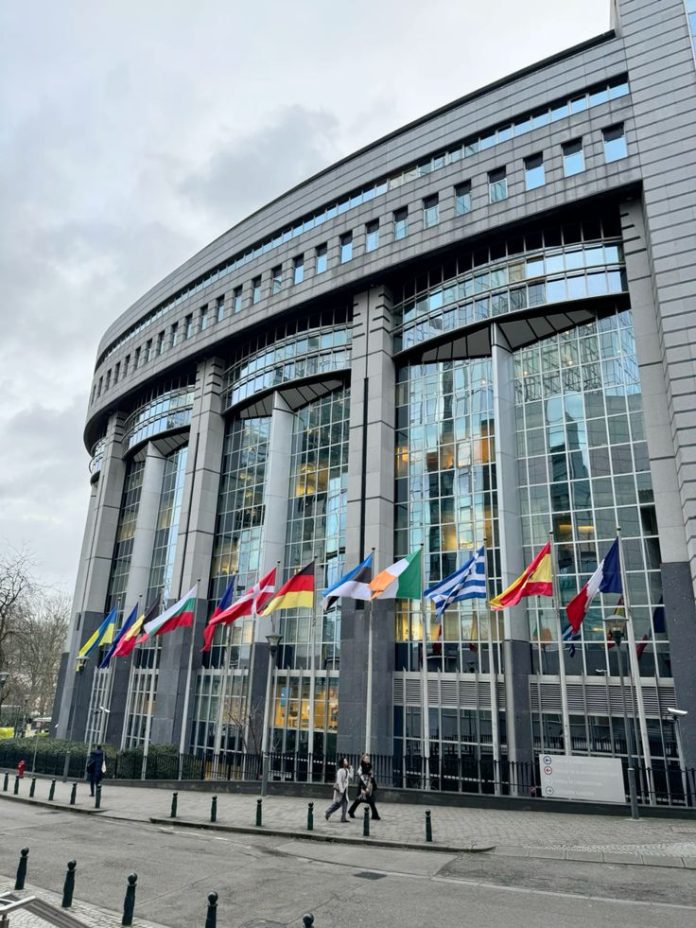The European Union has approved a major reform of its Carbon Border Adjustment Mechanism (CBAM), a climate-linked trade levy that will take full effect in 2026, simplifying compliance rules for European importers while maintaining its 99% emissions coverage. The decision, adopted by the EU Council in Brussels on September 30, 2025, aims to streamline reporting procedures and ease administrative costs for small and medium-sized enterprises. However, for African exporters, whose economies rely heavily on carbon-intensive products like steel, cement, and fertilizers, the measure represents more than a bureaucratic adjustment. It signals a decisive shift in how global trade will be governed, by carbon intensity rather than commodity value, with far-reaching implications for Africa’s industries, competitiveness, and sustainability trajectory.
The reform, part of the EU’s broader Omnibus I legislative package, introduces a series of technical and procedural adjustments designed to make CBAM easier to implement without weakening its environmental impact. Under the new rules, goods imported into the European market will continue to face a carbon-based levy aligned with the EU’s Emissions Trading System (ETS), but smaller importers, those handling under 50 tones of covered products annually, will be exempt from the full reporting and pricing requirements. The EU estimates that this mass-based exemption will relieve administrative pressure on most SMEs while keeping nearly all embedded emissions, around 99%, within CBAM’s scope.

According to Denmark’s Minister for European Affairs, Marie Bjerre, who announced the measure, the EU is attempting to strike a delicate balance: “If we want to succeed with the green transition and boost Europe’s competitiveness at the same time, we must reduce unnecessary burdens. That’s exactly what this instrument delivers, making life easier for European businesses while maintaining our climate ambitions.”
The CBAM, first adopted in 2023, is a cornerstone of the EU’s strategy to prevent carbon leakage, the relocation of emissions-heavy industries to regions with looser climate rules. It effectively places a price on the carbon embedded in imports, ensuring that foreign producers face similar costs to their European counterparts. From January 2026, importers of carbon-intensive goods such as iron, steel, aluminum, fertilizers, electricity, and hydrogen will be required to purchase CBAM certificates reflecting the carbon content of their imports.
Read also: AI takes center stage at AEW 2025 as experts warn Africa’s energy future hinges on digital readiness
This development presents both a challenge and a moment of reckoning for African nations. Europe remains a primary export destination for many of Africa’s industrial commodities, a market worth more than €150 billion annually. Yet, a large share of these exports originates from industries powered by fossil fuels, with limited access to carbon-efficient technologies. Analysts warn that without rapid investments in cleaner production, African manufacturers could lose competitiveness, facing higher effective costs in European markets.
Take South Africa, for instance, whose steel exports to the EU totaled over $1.3 billion in 2024. Its coal-reliant electricity grid means that every tone of exported steel carries a significant carbon footprint, exposing exporters to CBAM-related levies. Similarly, Morocco’s fertilizer industry, one of Africa’s largest, could face higher compliance costs if it fails to transition to renewable-powered production. In Egypt, aluminum and cement producers may find themselves priced out of EU supply chains unless they can document and reduce embedded emissions.
The EU’s decision to introduce a 50-tonne de minimis threshold offers some breathing room for small African exporters and traders, but it does little to shield larger producers. Instead, it underscores the urgency of developing carbon accounting systems, green certification frameworks, and regional carbon markets capable of aligning African industries with evolving global standards. The African Continental Free Trade Area (AfCFTA) Secretariat has already raised concerns that CBAM could act as a de facto trade barrier unless Africa builds its own carbon measurement and pricing capacity.
Read also: Russia’s new deal with Sudan: Railways, Airports, and the shifting map of African infrastructure
The Carbon Broader Adjustment Mechanism reform could be viewed as an opportunity for African economies to accelerate decarbonization and attract climate finance. The EU’s mechanisms create a price signal that may drive greater transparency and investment in renewable energy, cleaner manufacturing, and green logistics. Already, some African countries are positioning to adapt. Kenya, for instance, is expanding its renewable power capacity, now surpassing 90% from clean sources, and could leverage that advantage to market low-carbon exports. Namibia’s green hydrogen strategy and Morocco’s solar-powered industrial zones are further examples of how early adopters can turn regulatory pressure into competitive advantage.
The CBAM reform also introduces transitional arrangements to avoid disruption in early 2026, allowing importers awaiting registration to continue trading under temporary authorizations. This is meant to prevent border bottlenecks that could slow trade flows as new compliance systems come online. In addition, the EU Council’s adjustments simplify authorization processes, clarify emissions calculation methods, and recalibrate penalties — reforms intended to reduce uncertainty for businesses navigating the mechanism for the first time.
For policymakers, the challenge now is synchronizing CBAM’s objectives with global climate cooperation. African negotiators have argued that the mechanism risks penalizing countries that contribute least to global emissions yet lack access to affordable green technologies. The African Development Bank (AfDB) estimates that the continent needs over $200 billion annually to decarbonize its industrial and energy sectors, far more than current climate finance flows provide. Unless Europe complements CBAM with stronger support for industrial transition in the Global South, the regulation could widen existing inequalities in trade and technology access.

Still, within European policy circles, CBAM is framed as a necessary corrective to carbon leakage, not a punitive tool. By ensuring that imported goods face the same carbon price as domestically produced ones, EU officials argue, the bloc is protecting both climate integrity and industrial competitiveness. The simplified version of the law is designed to maintain that balance: rigorous enough to drive emissions reductions, but flexible enough to avoid overburdening smaller players.
As the regulation enters its final phase before full implementation in January 2026, its effects on African economies will begin to crystallize. Whether it accelerates green industrialization or exacerbates trade disparities will depend largely on how African governments and businesses respond. The race is now on to integrate sustainability into trade policy, build green infrastructure, and ensure that Africa’s path to industrial growth is not derailed by a border adjustment built for another continent.
Follow our LinkedIn page: Africa Sustainability Matters





